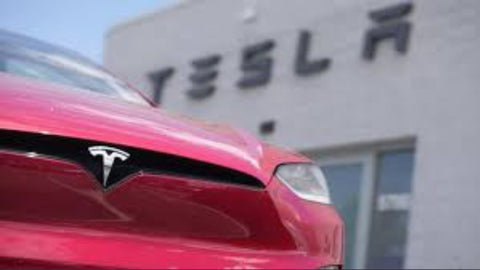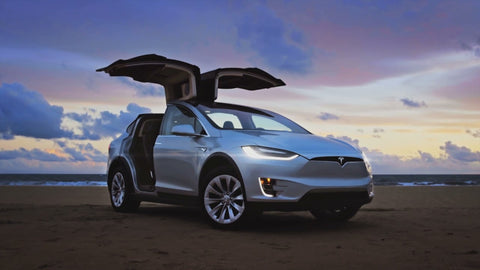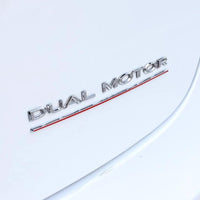Damaged Tech? Exposing Typical Problems Affecting Tesla's
The globe is ablaze with enthusiasm over Tesla's electric vehicles. They are leaders in the electric car revolution thanks to their svelte styling and emphasis on environmentally friendly technology. But no automobile is flawless, and Tesla's are hardly an exception. Recent consumer reports and studies suggest that Tesla's reputation for cutting-edge innovation may be undercut by subpar production, poor build quality, and electrical problems.
With its innovative electric car designs, state-of-the-art technology, and dedication to environmentally friendly transportation, Tesla has been a global leader in automotive innovation. But there is a truth to this automotive revolution that some Tesla customers have personally witnessed: subpar manufacture and electrical problems may taint the ownership experience.
The most typical Tesla Model problems, along with their solutions, are as follows
Owners of all Tesla models—from the Model S to the Model 3 and beyond—have experienced a variety of problems related to electrical breakdowns and manufacturing flaws. Although Tesla cars are known for their cutting-edge technology and remarkable performance, these issues draw attention to areas that still require work.

Tesla Is High In Class, Low In Build Quality
Tesla vehicles have been beset by complaints of shoddy fit and finish, including panel gaps, misplaced trim pieces, and uneven paint. These problems with quality control not only make the cars less visually appealing but also cast doubt on Tesla's manufacturing procedures and standards.

Failures With Door Handles And Window Regulators:
A few Tesla owners have reported problems with retractable door handles that do not extend or retract correctly and window regulators that do not work properly, making it difficult to open or close windows. The necessity of durable testing and strong engineering in car design is shown by these mechanical failures.
A little Too Rough And Polished For A Showroom
The variable quality of Tesla's production appears to be one of the most worrisome parts of ownership. Uneven paint jobs, misplaced body panels, and even leaks have all been observed by owners. Even while these might only seem like little annoyances, they cast doubt on Tesla's entire quality assurance procedure. After all, a high-end vehicle should have a high-end finish.
Systemic Failures: Electrical Issues
The excessive dependence of most people in modern cars and Tesla on intricate electrical systems may potentially cause issues. Unexpected power outages, broken infotainment systems, and even charging problems have all been reported. Drivers may become frustrated by these electrical gremlins and end up stranded or having a worse driving experience.

The Tires On Electric Cars Wear Out Faster
E-cars are known for their quietness and environmental friendliness. Owners are typically surprised by how quickly tires wear out compared to internal combustion engine vehicles. Multifaceted causes explain this phenomenon. First, EVs' battery packs make them heavier, which puts strain on tires. This extra weight can accelerate tread wear, especially on the front tires, where most of the vehicle's weight is. Second, electric motors' quick torque delivery allows EVs to accelerate faster, which might increase tire wear, especially during vigorous driving.
Computer Errors And Autopilot
Tesla's Autopilot system, a cornerstone of its sophisticated driver-assistance capabilities, has drawn praise and criticism. Autopilot is convenient and safe, but it has drawbacks. Computer malfunctions can cause Autopilot to behave unexpectedly or disengage, placing drivers in danger. Some Tesla owners have observed phantom brakes, where the vehicle suddenly slows down for no apparent reason, underscoring the need to improve autonomous driving technologies. Tesla distributes software updates to fix known faults and improve Autopilot, but every emerging technology has bugs.
The Most Common Tesla Model X problems, And Tesla Model X Reliability Compared To Similar Cars
Tesla's Model X's falcon-wing doors and innovative technology have won over electric car fans. Like any vehicle, the Model X has faults, some of which are recurring for owners. Falcon-wing door difficulties including sensor failure, misalignment, and occasional failures to open or close are regular Model X complaints. The Model X's falcon-wing doors give a futuristic touch, but their complicated design has caused reliability difficulties that Tesla is fixing with software and hardware updates. Leaks and breakdowns in the Model X's air suspension system cause uneven ride heights and poor driving dynamics.

Tesla has improved the Model X's air suspension components, but older models still have concerns. Compared to luxury SUVs like the Audi e-tron and Jaguar I-PACE, the Tesla Model X is reliable and technologically advanced. However, its increased quality control and reliability issues may deter purchasers.
Issues With Charging
While charging infrastructure and accessibility have improved in recent years, electric car owners still face issues with charging speed, availability, and compatibility. The lack of fast-charging stations in some places causes long-distance travel delays for EV owners. Drivers may also have trouble finding acceptable charging stations when traveling abroad due to varied charging standards and plug types. Another issue is public charging infrastructure reliability, with out-of-service stations, malfunctioning equipment, and billing issues influencing charging.

Tesla's Supercharger network, which charges faster but is less widespread than third-party networks, presents particular charging issues for Tesla customers. Long wait times at busy Supercharger stations during peak hours can annoy drivers and make electric vehicle ownership less convenient. EV drivers should plan their trips, use smartphone apps and navigation systems to find charging stations and investigate home charging solutions for convenience and flexibility.
At-Home Chargers Can Add To The Initial Cost Of Buying An EV
At-home chargers can raise EV purchase prices. Owning an electric vehicle (EV) has several benefits, like lower fuel costs, decreased pollutants, and a quieter, smoother driving experience, but charging infrastructure expenditures are still an expense. Dedicated home charging stations or wall-mounted chargers allow overnight charging and eliminate reliance on public charging networks. However, these installations frequently require equipment and professional installation, increasing the expense of an EV.
The price of at-home charging stations depends on charging speed, connectivity, and brand reputation. At-home charging options might be expensive, but many EV owners find the long-term benefits worth it. At-home chargers can reduce charging expenses and make electric vehicle ownership easier by using off-peak electricity prices and decreasing public charging infrastructure.
Some Tesla Owners Say They've Noticed Quality-Control issues Over The Years
Tesla is known for its ingenuity and new technology, but its quality control and manufacturing processes have been criticized. Tesla owners have experienced panel gaps, paint flaws, drivetrain problems, and electrical faults. Tesla has refined its production methods and paid more attention to detail to improve quality, yet occasional quality concerns still frustrate owners.

Tesla Warning Signals And Cruise Control Issues Can Be Problem Areas
Tesla's are known for their cutting-edge technology and futuristic features, but like any sophisticated equipment, they have drawbacks. Tesla owners worry about warning lights and cruise control. Tesla automobiles include advanced sensors and diagnostic systems that monitor vehicle components and systems. Dashboard warning lights alert drivers of anomalies. Tesla vehicle alerts drivers to potential dangers, but they can be misread.
Tesla warning lights might signal battery, brake, traction control, and other issues. Address warning lights immediately to avoid further damage or safety risks. Ignoring these signs can cause bigger issues. Tesla's Autopilot cruise control system has been praised for its capabilities and condemned for rare glitches. Tesla Autopilot has adaptive cruise control, lane-keeping assistance, and automatic braking. Some Tesla owners have observed phantom brakes, where the vehicle suddenly slows down.
Batteries And Tires Will Cost You A Pretty Penny
Some EV owners are surprised by the cost of upgrading batteries and tires. EVs have many advantages, including lower fuel costs and pollution, but maintenance costs may differ. The battery pack is one of an EV's most expensive parts, and its capacity may decline over time, limiting new vehicles' range and performance. Tesla's batteries are noted for their durability, however, older vehicles may need battery replacement.
Control Arm Issues
Control arms help a vehicle's suspension perform well in corners and on uneven terrain. Some Tesla owners have reported issues with suffered control arm premature wear, bushing failures, and suspension misalignment. Control arm difficulties can cause uneven tire wear, steering instability, and driving sounds. Control arm issues can affect vehicle safety and handling, causing accidents or suspension damage if left untreated.
Problematic Safety Features
Tesla cars have collision avoidance systems, automated emergency braking, and advanced driver-assistance technologies. These safety features have caused false alarms and failure to engage for some Tesla owners. False positives from collision warning systems or autonomous emergency braking can unnerve drivers and passengers, causing needless braking or distractions. However, serious safety concerns not activating in critical periods might raise accident and injury risks.
Range Anxiety Can Be An Issue For Tesla Owners — Though It's The Best EV When It Comes To Charging
Tesla drivers worry about range anxiety and the dread of running out of battery while driving. Tesla's Supercharger network and fast-charging capabilities reduce range anxiety for many owners, but long-distance driving and limited charging infrastructure in some places can still be difficult.
Problematic Power Steering System And Faulty Steering Assist
Teslas have had steering wheel issues, including defective steering assist. These issues might cause steering issues, uneven response, and unexpected driving behavior. Tesla owners and the firm prioritize steering system dependability and safety when updating software to address such concerns. Safe driving in Tesla vehicles requires vigilance and early reporting of steering abnormalities.
Taking Care Of The Root Causes:
Several actions can be taken to take care of the underlying causes of subpar manufacturing and electrical problems with Tesla models:
Enhancing Quality Assurance Procedures:
Prioritizing this will help Tesla find and fix manufacturing flaws before cars are shipped off the assembly line. This entails putting in place more stringent quality control procedures, carrying out in-depth inspections, and encouraging excellence as a culture throughout the production process.
Software Upgrades And Diagnostic Tools:
In order to facilitate proactive electrical system monitoring and troubleshooting, Tesla should keep funding software upgrades and diagnostic tools. Tesla can detect new faults and quickly implement changes to minimize possible concerns by utilizing real-time data and analytics.
Customer Support and contact: Addressing concerns about subpar manufacturing and electrical problems requires honest and open contact with customers. To promote customer happiness and loyalty, Tesla should prioritize prompt fixes, give quick customer assistance, and establish clear routes for reporting issues.
Navigating Tesla Service Center: Addressing Issues And Innovations
Tesla service centers play a crucial role in addressing various issues reported by owners, from software glitches to steering wheel locking incidents. Under the guidance of Tesla CEO Elon Musk, these centers work tirelessly to provide efficient repairs and maintenance services. Whether it's addressing concerns with Tesla batteries affected by cold weather or managing repair costs, the dedicated teams at Tesla service centers strive to ensure customer satisfaction. Additionally, Tesla's innovative approach extends to collaborations with car insurance providers, aiming to streamline processes and minimize hassles for owners facing unexpected or expensive repairs or incidents.

The Path Ahead For Tesla
Although Tesla's innovative approach to electric cars and autonomous driving technology has unquestionably revolutionized the automotive industry, the frequency of subpar manufacturing and electrical problems in Tesla models highlights the significance of accountability and continuous improvement for car companies. Tesla must continue to be unwavering in its dedication to quality, dependability, and customer happiness as it negotiates the challenges of mass production and technological innovation.

For Tesla to continue leading the electric vehicle market, it will be imperative that these production and electrical problems are resolved. More attention to quality control and thorough testing protocols are probably essential. A driving experience that is not only cutting-edge technologically but also dependable and error-free must be Tesla's top priority. If Tesla is able to get over these obstacles and fulfill its promise of offering a genuinely remarkable electric automobile experience, only time will tell.
 :
:  :
: 








